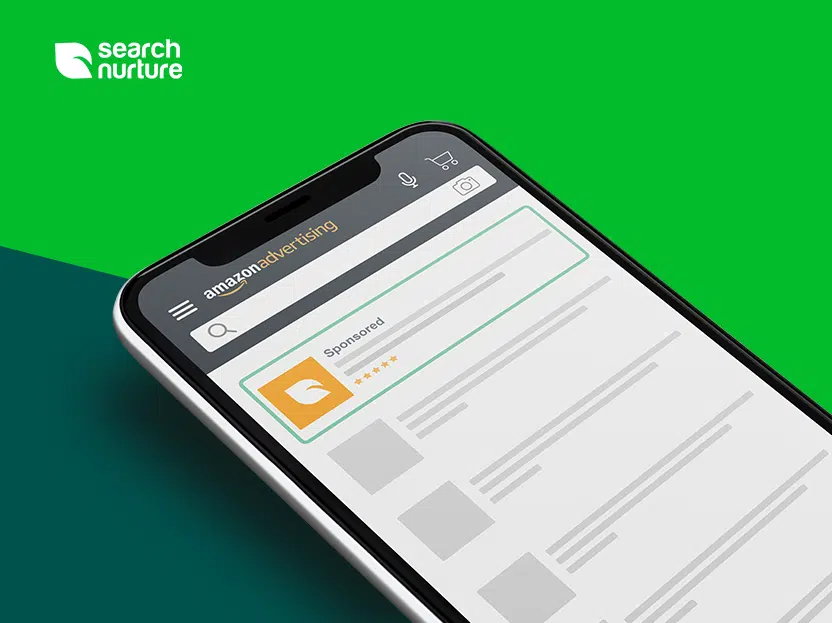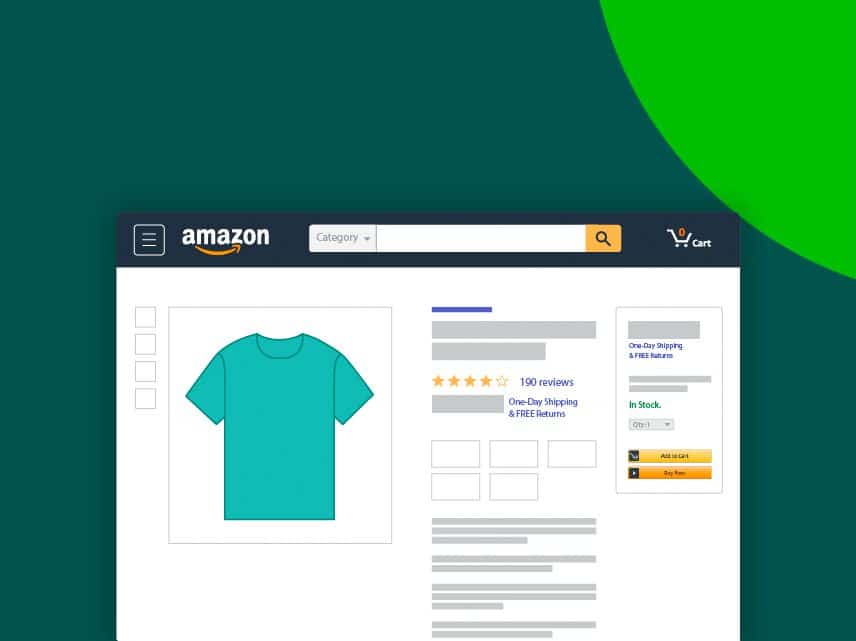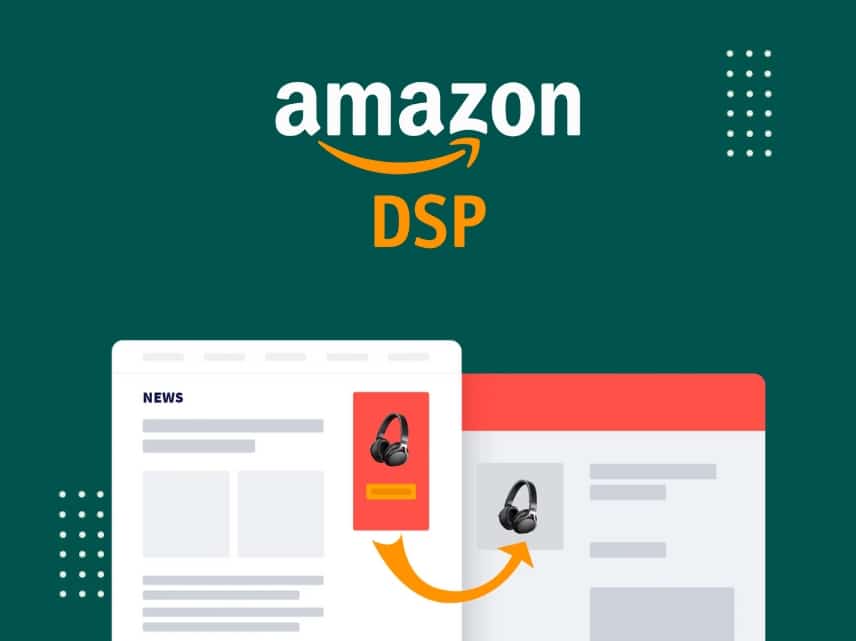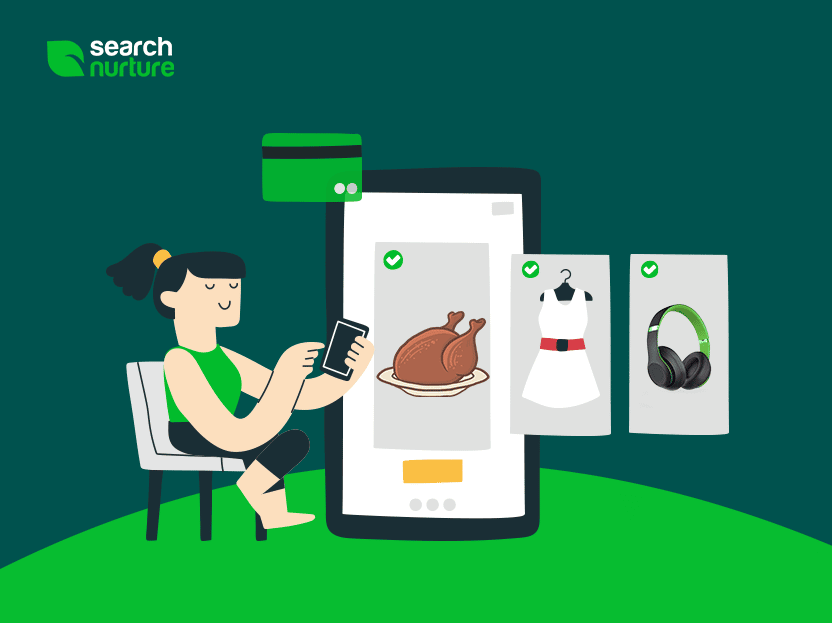Table of Contents
Advertise Worldwide
Who Can Qualify for AMS?
What is the Difference Between a Vendor and Seller Account?
How Does AMS Work?
Targeting Your Audience
3 Types of AMS Ad Campaigns
Amazon Headline Search Ads
Sponsored Product Ads
Product Display Ads
How Do I Know If My Ads Are Working?
How Can AMS Help My Business?
Why Use AMS?
Choose the Right Kind of Ad for Your Needs
With almost 200 million shoppers visiting Amazon’s websites each month, it is by far the largest shop in the world—the 800-pound gorilla of online shopping. So, it makes perfect sense to want your product prominently displayed in front of all these shoppers.
Unfortunately, so does everyone else: in the US alone, Amazon US lists over 600 million products. Which means, you need to find a way to put your product in front of all those visitors, or your competition will.
Enter Amazon Marketing Services or AMS. Launch in 2012, AMS is an advertising platform that allows you to get your products featured on the world’s biggest online store, which in turn can help with brand awareness and product visibility, with the ultimate goal of increasing sales. There are three kinds of available advertising: Headline Ads, Sponsored Ads, and Product Display Ads. Together, they can make your sales take off!
Advertise Worldwide
Since its 2012 launch, AMS has been expanding, both geographically and in terms of products. It is now available for most countries where Amazon has a presence, namely:
As for products, Amazon allows products in the following categories to be promoted through AMS (this is not an exclusive list; books are eligible for Sponsored and Product Display Ads in the US).
Even though Amazon is always expanding AMS’s reach, it’s still not available for all products or countries. For example, you can only advertise on AMS if you are an Amazon vendor. And third-party sellers were only invited to AMS in 2017, finally allowing a new group of users to access the platform, although they had access to a limited version of ads through the Seller Central platform.
Who Can Qualify for AMS?
AMS is currently available to anyone with a Seller Central account, but to unleash its full potential you will need a Vendor Central account. This will allow you to both sell your products through Amazon and create any kind of Ads.
What is the Difference Between a Vendor and Seller Account?
The difference between a Seller account and a Vendor one is that Sellers list, price, and market their products themselves, whereas Vendors sell their products to Amazon, which then lists and sells them on to its users.
Another difference is that shoppers of Vendor products will see a “Sold by Amazon” notification on the product page. This can boost their trust in the product, leading to more sales.
Also, Vendors avoid Amazon seller fees such as costs for referrals, fulfillment, or even having an account. Instead, they pay a small monthly fee, which allows them to sell unlimited products. This fee also covers fulfillment by Amazon and gift wrapping options.
The greatest difference, however, is that Vendors also enjoy the full marketing opportunities provided by AMS.
How Does AMS Work?
AMS works the same way as other Internet-based Ads—through a lightning-fast bidding system. Whenever Amazon chooses which ad to display on a specific page, numerous Ads bid against each other behind the scenes. Budget is only one of the factors determining the winner, as Amazon also uses a ranking system to select the most profitable Ads.
Once your Ad has been picked, it is displayed on Amazon’s search page. You pay every time someone clicks on your Ad. This model, called Pay-Per-Click (PPC), has the advantage of letting you display your Ad as often as you wish to maximize your brand awareness. However, if you don’t target it correctly and hardly anyone clicks on it, Amazon will lower its ranking and display other Ads instead, no matter how high your bid. This explains why a common complaint with AMS is, “Amazon never displays my Ad.”
Targeting Your Audience
Since you pay Amazon when someone clicks on your Ad and when you make a sale, Amazon is rewarded for effective advertising. It is to both Amazon’s and your own interest, therefore, to run the best possible campaign.
In order to maximize clicks and get the most out of your Ad, you need to target your audience as best as you can: an audience which is interested in your product will click on the Ad more often. It’s a win-win for everyone, including Amazon. But it’s notoriously hard to pinpoint the best audience for your product.
Targeting is achieved in three ways. You can:
- Select a number of keywords. When people search for them, your Ad will be among those bidding for display.
- Select a number of interests or categories. Instead of picking individual products to target, category targeting allows advertisers to reach products within related categories or customer interests. This way, you can target potential customers based on their shopping habits, introducing yourself to a large audience.
- Last, select similar products. When people open a product page, your Ad will be displayed on the right-hand side of that product details page.
3 Types of AMS Ad Campaigns
Once you have narrowed down your audience, you can choose from a number of different kinds of Ads to show them:
Amazon Headline Search Ads
Amazon Headline Search Ads allow brands to promote three or more products and drive traffic to any of the following destinations:
- The Amazon Store for your brand
- Any page that showcases your products on Amazon (i.e. a brand page)
- A custom landing page on Amazon, e.g. a best selling product.
As the name suggests, Headline Search Ads appear when you search for an item, at the very top of the Search Results page (marked in green):
You may notice in the above example how Amazon displays its own Ads. Yes, depending on your product, there are times when your product may have to outbid Amazon itself. In fact, Headline Search Ads are not for everyone, as third-party sellers need to be accepted into the Brand Registry program in order to qualify for them.
Amazon Headline Search Ads is particularly effective for brand building. Their size and position on the page ensure they are noticed, while the fact they can link to a brand page allows you to promote your entire brand instead of a single product alone.
Customers who click on Headline Search Ads are likely at the beginning of their purchase phase, so it is best to send them to an AMS Brand page where they can view a variety of products on a branded page.
Amazon Headline Search Ads are also great for promoting a range of products. Since you can display up to three products, this lets you advertise a wide range of them, e.g. from your more inexpensive to the more expensive ones. This means that Ads can be cost-effective, too, as you effectively get three times as many Ads for the price of one.
The best part about them, however, is their placement: since they appear at the very top of a search page, there is no chance your Ad will be ignored or missed by shoppers, especially as you can use your own Ad copy to catch the shopper’s eye.
Furthermore, their targeting is ideal: your Ads will only appear on the screens of people actively searching for the kind of products you sell, which means you have excellent chances of converting these views into actual sales.
Amazon Sponsored Products
The most effective and used Ads are Sponsored Product Ads. If you run a search on Amazon, you will notice among the results some products marked as “Sponsored.” These are products that Amazon thinks might appeal to you, based on keywords or subject material. Sponsored products can be an effective way of promoting your product to the right audience.
When a shopper clicks on your ad, they are taken to your product detail page and away from a competitor’s one. This lets you target your competition and steer potential customers away from them and on to your own pages. In fact, your competitors are probably doing this already, especially since Amazon lets you target specific products.
To use Sponsored Products Ads, you set up keywords and bids and let Amazon work its magic, displaying your Ad on search results pages. These can appear above, below, or within the search results on a desktop computer. On mobile, they can appear above or below the search results.
Sponsored Products Ads also appear on product detail pages, as a row of products:
However, the great number of products listed here decreases its effectiveness as a marketing tool. In the image above, you may have noticed on the top-right corner the counter: Page 1 of 69. Which means that your potential customer may never even see your Ad.
Product Display Ads
To make sure a shopper sees your Ad, Amazon has introduced a third kind of Ad, called a Product Display Ad. This is shown on the bottom right of a product listing, right under the “Add to Cart” area. This is a prime location, as it is the last advertisement a potential buyer will see before actually buying something.
Unlike Sponsored Ads, which feature dozens of products, Product Display Ads only feature a single product, thus allowing you far better control of your Ad placement.
A great way to use Product Display Ads is to cross-promote your own products. Show one of your own Ads on each of your product pages. Use this Ad to steer shoppers to better, more expensive versions of your products.
Another good way to use them is to target specific products sold by your competitors. This is the last opportunity for you to tell the shopper, “Before you buy that product, you may wish to check out mine, too.” Offer shoppers a better product at a better price. As your competitors are most likely already doing this to you, you may wish to increase your bids to ensure that only your own products show on your page.
Even better, people who have visited a product for which you run Product Display Ads will be targeted by Amazon in their newsletters, thus increasing your Ads’ effectiveness.
How Do I Know If My Ads Are Working?
The proof is in the eating, as the saying goes: just watch your sales increase! But Amazon also has a helpful metric called ACoS (Average Cost of Sale). This lets you know how much each sale is costing you. The lower your ACoS, the better: if you’re selling a product which costs $10 and you are spending that amount on Ads, you will have an ACoS of 100%—i.e. you are spending as much as you are making. However, if you only spend $1 on Ads, then you will have an ACoS of 10% and a nice profit margin of 90%.
This is made easier by Amazon’s metrics. To further help out advertisers, Amazon is now including monthly data, allowing you to sort sales by date. This improves the available data, as it allows you better testing of your campaigns.
How Can AMS Help My Business?
Amazon is not just the world’s largest e-commerce platform; it is also a company which has invested millions of dollars and countless hours studying ways to improve people’s shopping experience.
All that research and resources are made available to you through AMS. Use it to:
- Raise your brand awareness and build a killer brand.
- Gain visibility on Amazon’s search pages and target the right kind of shoppers: those interested in the kind of products you make.
- Steer shoppers away from your competition and to your own product pages.
- Upsell your products: guide shoppers to your better, more expensive products.
Why Use AMS?
You should never judge a book by its cover, they say, but let’s be honest: we do. So, if you have a great product page which fails to generate any sales, it is time to consider an AMS campaign.
However, even the best Ad can only get the visitor to your product page. It is up to you to convert these visits into actual sales. Ask yourself—or, even better, your customers—these questions:
- Is the product name catchy? Does it match the product?
- Does your page have high-quality images?
- What about customer reviews? What do people really think of your product?
- Is the product description clear and convincing? Does it make a visitor want to buy your product?
Everything, from the images you use to the Ad copy to your product title and description, must align perfectly in order to ensure a sale and guarantee your campaign’s success.
But if you’ve answered “yes” to all of the above questions and you’re not running any AMS Ads yet, you are missing out on a great opportunity to grow your business and increase your sales.
Choose the Right Kind of Ad for Your Needs
Contrary to what some seem to think, working with AMS is an ongoing process—you don’t just build a campaign and forget about it.
First, you design your campaigns according to your needs. Each type of Ad works in different ways, so you can combine any of the three kinds available to you, to unleash the full capabilities of AMS.
- Use Headline Search Ads to build your brand. That way, people will see your brand name, logo, and sample products whenever they search for products related to yours. This is especially useful if you have a number of products to promote, as you can list up to three of them at the very top of search pages.
- Use Sponsored Product Ads to ensure your products not only appear first on search pages but are also displayed on your competitors’ pages, thus steering shoppers away from your competition.
- Finally, use Product Display Ads to cross-sell your products, guiding shoppers to your more expensive ones. Also, use them to divert shoppers away from your competitors’ product pages and onto your own ones.
Once you have built your campaigns, you need to constantly adjust your bids, campaigns, and keywords to meet your goals and increase efficiency. Amazon provides you with useful metrics and the data you need to do so: campaign reports track how much you spend on each Ad and how well it performs on an individual level. All you need to do is monitor this data and optimize your campaigns accordingly, fine-tuning them on a regular basis. Add new performing keywords to your campaigns and run A/B tests to see which ones perform best.
You have a great product. Now, you must put it in front of as many people as possible. Amazon helps you target the right kind of people: the ones who are actively looking to buy a product like yours. Since you only pay for the clicks your Ads receive, AMS is one of the most cost-effective ways of building your brand and increasing traffic to your product pages.
The three types of Ads available have the advantage of targeting shoppers at all levels of the so-called sales funnel (which describes what a shopper does from the time they enter Amazon to the point where they buy a product): Headline Search Ads grab a shopper’s attention at the very start, while Sponsored Products and Product Display ones steer them to your product and to the Cart page.
You may prefer to focus on what you do best: making the perfect product. We get it. But you also need to sell it. Take advantage of the powerhouse that is Amazon and grow your business in unprecedented ways!
If you need help, why not let us do what we do best—reach millions of shoppers and sell them your products? Contact us to find out how!










